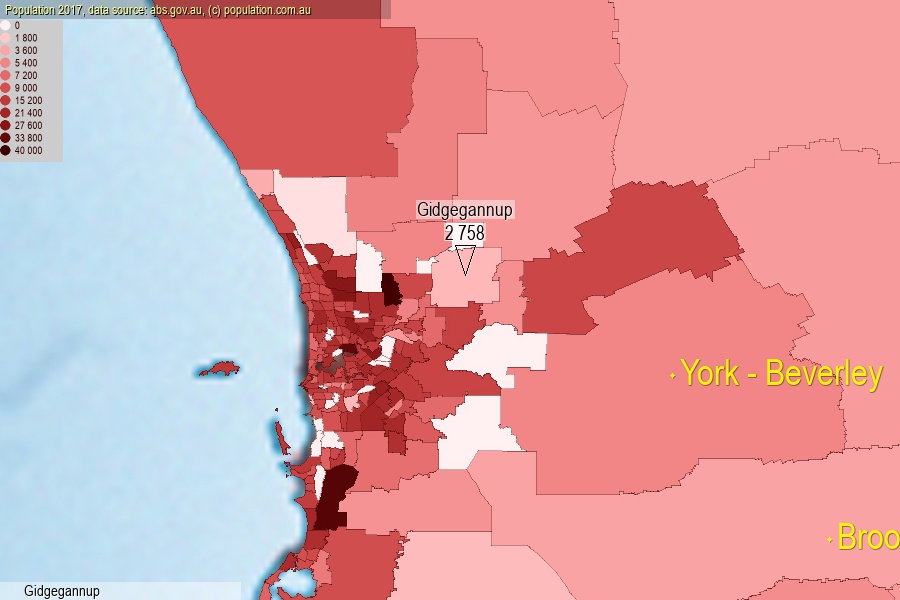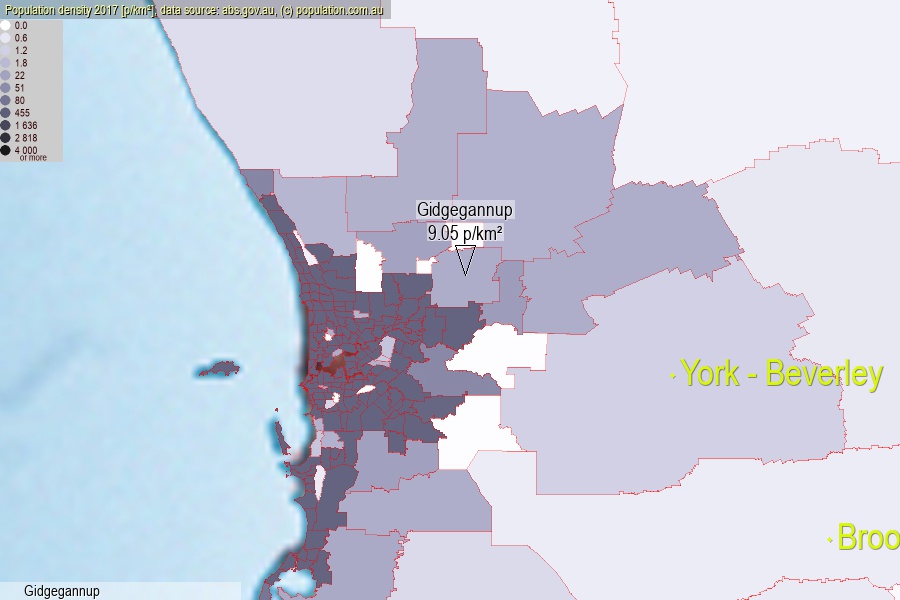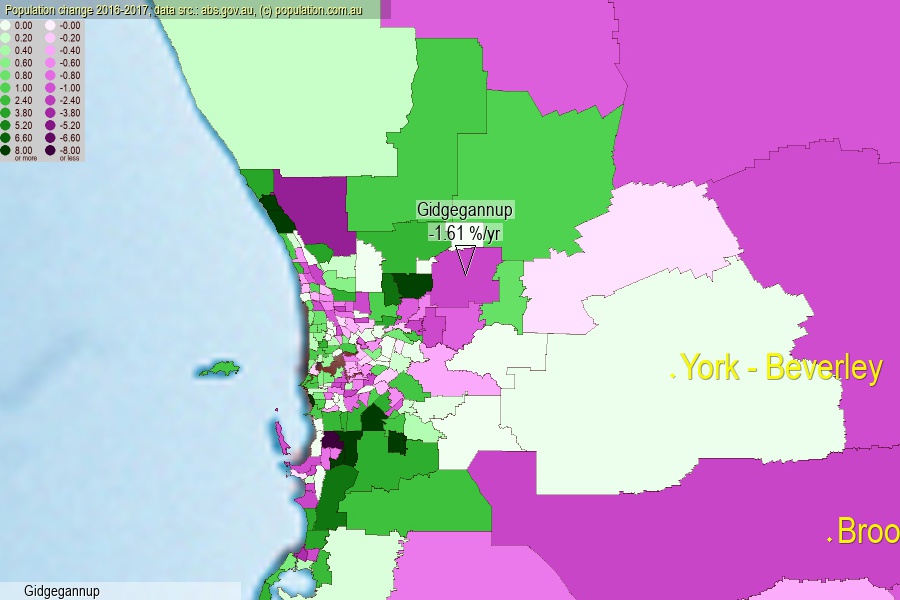 population.com.au
population.com.auLast official estimated population of Gidgegannup (as Statistical Area Level 2) was 2 758 people (on 2017-06-30)[2]. This was 0.01% of total Australian population and 0.106% of WA population. Area of Gidgegannup is 304.90 km², in this year population density was 9.05 p/km² . If population growth rate would be same as in period 2016-2017 (-1.61%/yr), Gidgegannup population in 2025 would be 2 423. [0]



Click to enlarge. Gidgegannup is located in the center of the images.
Population [people], population density [p./km²] and population change [%/year] [2]
View borders » (new window) [4]
[1991-1992] +1.25 %/Yr.
[1992-1993] +2.39 %/Yr.
[1993-1994] +2.94 %/Yr.
[1994-1995] +2.71 %/Yr.
[1995-1996] +2.49 %/Yr.
[1996-1997] +3.89 %/Yr.
[1997-1998] +3.55 %/Yr.
[1998-1999] +5.56 %/Yr.
[1999-2000] +6.61 %/Yr.
[2000-2001] +4.71 %/Yr.
[2001-2002] +11.79 %/Yr.
[2002-2003] +7.70 %/Yr.
[2003-2004] +3.10 %/Yr.
[2004-2005] +3.98 %/Yr.
[2005-2006] +4.04 %/Yr.
[2006-2007] +2.94 %/Yr.
[2007-2008] +1.11 %/Yr.
[2008-2009] +2.55 %/Yr.
[2009-2010] +0.23 %/Yr.
[2010-2011] +1.83 %/Yr.
[2011-2012] +2.51 %/Yr.
[2012-2013] +2.19 %/Yr.
[2013-2014] +1.97 %/Yr.
[2014-2015] -0.39 %/Yr.
[2015-2016] -1.23 %/Yr.
[2016-2017] -1.61 %/Yr.
[0] Calculated with linear interpolation from officially estimated population
[1] Read more about SA2 and Australian Statistical Geography Standard (ASGS) on abs.gov.au
[2] Population data from Australian Bureau of Statistics (Population and density: 2017; change: 2016-2017)
[3] Digital Boundaries: Australian Statistical Geography Standard (ASGS) 2016.
[4] Border coordinates are simplifyed using Ramer-Douglas-Peucker algorithm.